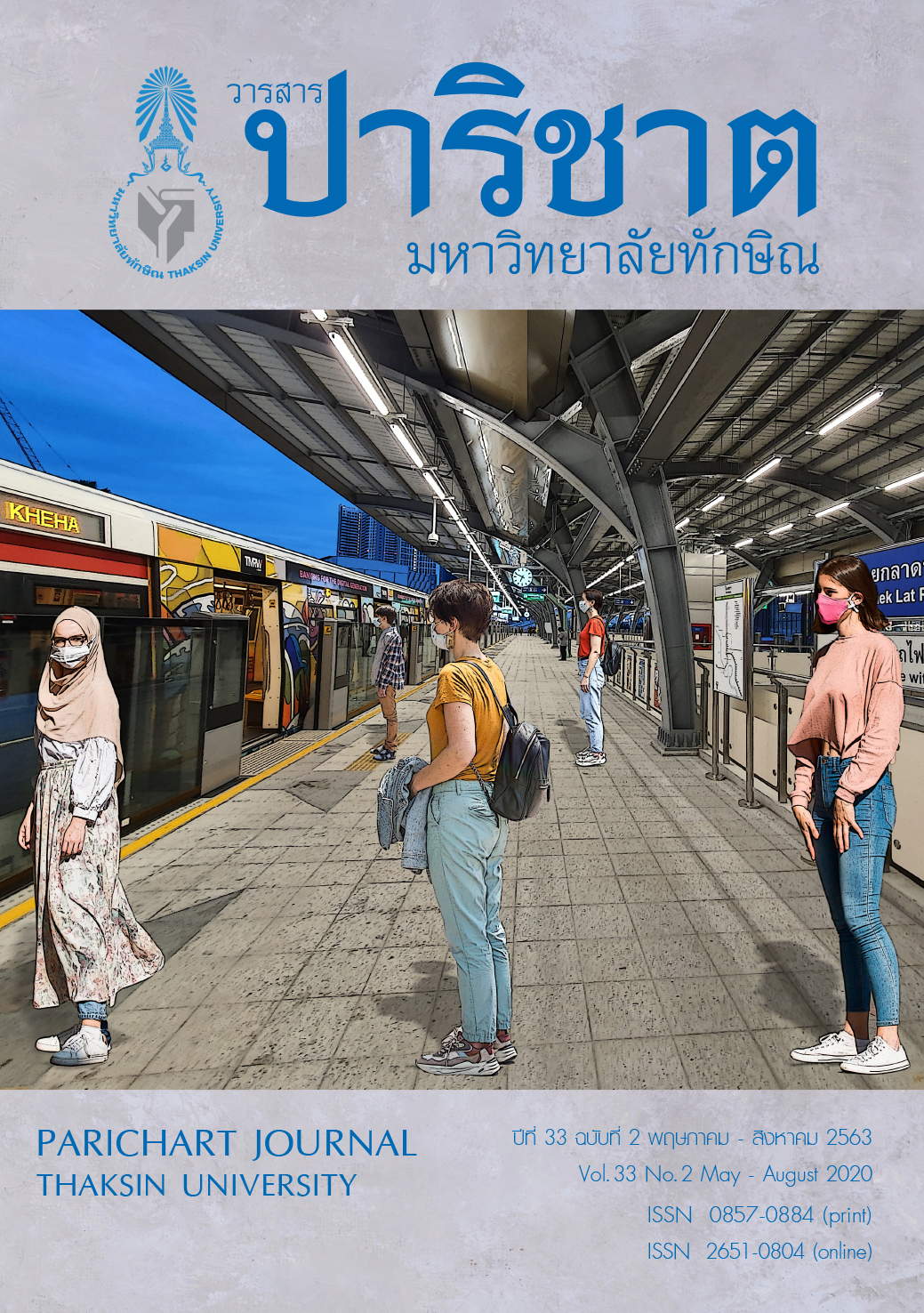Model and the Success of Financial Immunity in Community : Case Study of Saopao Community Welfare Fund, Sichon District, Nakhon Si Thammarat
Main Article Content
Abstract
This research article aimed to (1) study the state of financial immunity of the community; (2) compare the success of the financial immunization of the fund which classified by financial conditional level; 3) analyze the components of financial immunization; and (4) finding a model for community financial immunization by asking a sample of 300 people and a focus group. The results of the success of the financial immunity of the community found that most of the financial condition level were at the medium level (7 - 15 points). The results of comparison of differences of opinions towards fund management found that factors that had significant statistically differences were (1) the committee has management skills and expertise; (2) community welfare members had a shared ownership awareness; and (3) participation in learning exchange activities. The analysis of the components of financial immunization of the community using Principal Component Analysis Method which extracting important variables were (1) immunity; (2) cognitive understanding; (3) integration linking; (4) management model to be revenue; and (5) development and improving the quality of life. Finally, to combine all the data in qualitative data analysis and confirm the data using the triangular technique then summarize it into the model and the success of the community financial immunity.
Article Details
References
Kenan Institute Asia. (2014). Labor debt problem resolution to strengthen the Thai economy sustainably. Retrieved March 16, 2015, from http://www.kenan-asia.org/th/allmedia/blog/item /222-blog-post-20. (in Thai)
Bank of Thailand. (2016). Household Financial Access Survey 2016. Financial Institutions Strategy Department, Bank of Thailand. (in Thai)
Community Organizations Development Institute (Public Organization). (2016, January 16). Summary of the project of the Commonwealth Community Welfare. Community news. 10. (in Thai)
Yunus, M. (1990). Grameen Bank: organization and operation, Microenterprises in Developing Countries. London: Intermediate Technology Publications.
Nakhon Si Thammarat Provincial Administration Organization. (2014). Nakhon Si Thammarat Community Welfare Assembly Report. Retrieved March 12, 2014, from: http://www.codi.or.th/2015-08-04-11-01-52. (in Thai)
Yunus, M. (2007). Creating a World without poverty: Social business and the future of capitalism. New York: Public Affairs. (in Thai)
Vasee. P. (2004). Integrated and sustainable development by setting the area as a location for peace and happiness in every village, every district and every province. Journal of Language and Culture, 23(1), 5-14. (in Thai)
Creswell, J. W. (2015). A concise introduction to mixed methods research. Thousand Oaks, C.A.: Sage Publications. (in Thai)
Sri Sai. S. (2008). Applied statistics for social science research. Bangkok: Faculty of Education, Chulalongkorn University. (in Thai)
Bank of Thailand. (2014). Thai Financial Literacy Survey 2014. Financial Institutions Strategy Department, Bank of Thailand. (in Thai)
Chantavanich. S. (2008). Qualitative research methods. Bangkok: Chulapress, Chulalongkorn University. (in Thai)
OECD. (2009). Measuring Financial literacy: Questionnaire and Guidance Notes for Conducting and Internationally Comparable Survey of Financial Literacy. INFE International Network on Financial Education.
Nonthapatamadul. K. (2011). Qualitative research in social welfare: concepts and research methods. Bangkok: Thammasat University Press. (in Thai)
Chantarasorn. W. (2008). An Integrated Theory of Public Policy Implementation. Bangkok: The Association of Researchers of Thailand. (in Thai)
Aparkorn. P. (2011). The roles of Microfinance in promoting financial access. Fiscal Policy Office. Ministry of Finance. (in Thai)
Robinson. M. (2001). The Microfinance Revolution. Washington, DC: The World Bank.
National Savings Fund. (2017). Introduction to the National Savings Fund. Retrieved January 14, 2017, from: https://www.nsf.or.th/index.php. (in Thai)


